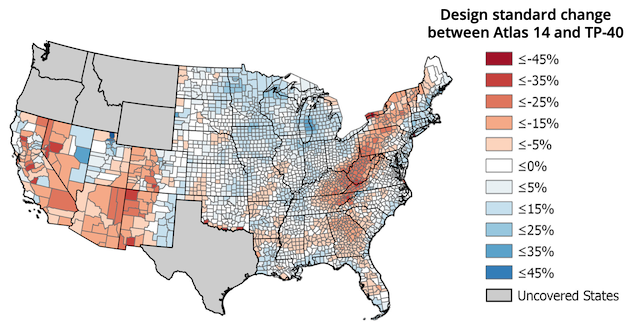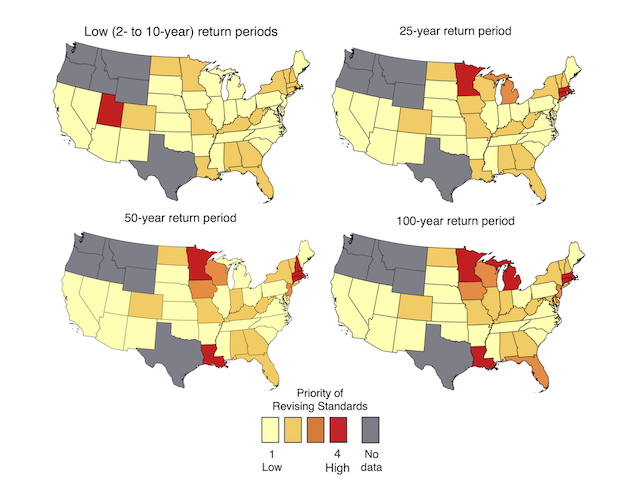Project 1
Engineering Standards Under a Changing Climate
I worked on characterizing spatial and temporal changes in State Department of Transportation (DOT) stormwater engineering standards using successive precipitation frequency documents to quantify increases or decreases in single stormwater assets risk of failure. Based on this analysis, I developped a risk index to identify which states should prioritize revising their standards and accommodate additional capacity to withstand observed and future increases in rainfall extremes.
This work has been published in Environmental Research Letters Lopez-Cantu, T., & Samaras, C. (2018). Temporal and spatial evaluation of stormwater engineering standards reveals risks and priorities across the United States. Environmental Research Letters. 13 074006

Positive differences between Atlas 14 and Technical Paper 40 suggest infrastructure designed with the later are undersized for conditions described in Atlas 14. Percent change 25 year return period, between NOAA Atlas 14 and TP40 [(NOAA Atlas 14 TP40)/TP40] for the 24h duration, 25 year return period spatially averaged percent change (by county). Northwestern states and Texas are excluded from this figure because they are not covered by Atlas 14.
Takeaways
- Engineering standards for designing stormwater infrastructure need to be revised regularly considering climate change.
- Many states’ standards were found to be in high priority to be revised.
- Existing standards and infrastructure in many regions of the U.S. are likely not effective in a changing climate.
- Resilient infrastructure design needs frequently updated information resources as well as an understanding of the range of future changes.

Several states should highly prioritize revising their standards for structures that are intended to handle very heavy events. Map shows the priority to revise different return period standards for designing stormwater infrastructure under current climate conditions.
Read the published paper for free here.